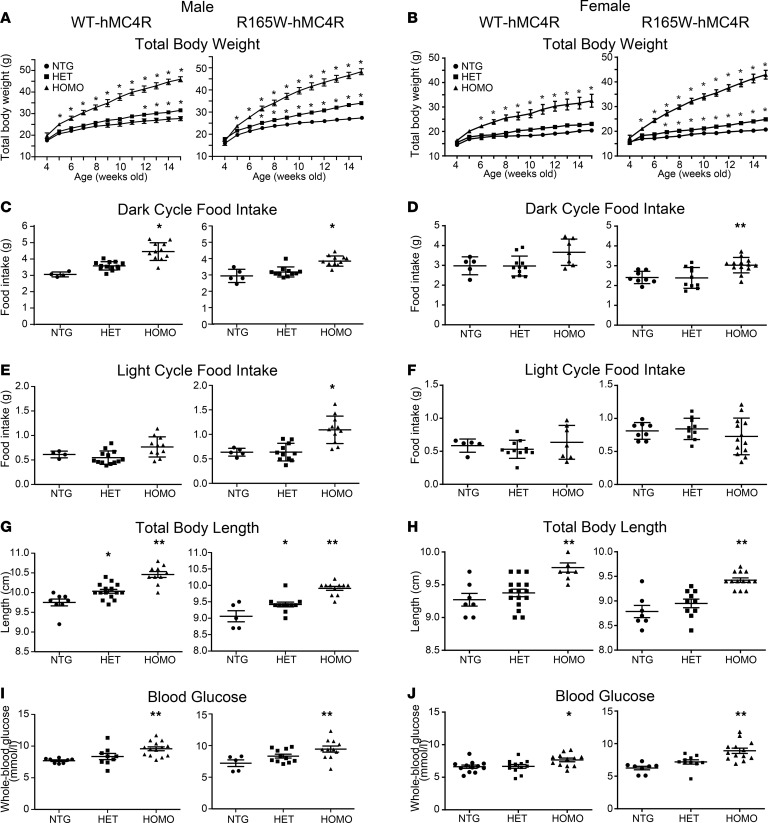Figure 2. Body weight gain, food consumption, body length, and blood glucose of WT- and R165W-hMC4R-KI mice and their control littermates.
(A and B) Weight gain of male (A) or female (B) WT-hMC4R-KI mice (left) (male: NTG 7, HET 15, HOMO 10; female: NTG 6, HET 14, HOMO 8) or R165W-hMC4R-KI mice (right) (male: NTG 10, HET 19, HOMO 9; female: NTG 10, HET 12, HOMO 6). (C and D) Food intake during dark cycle of WT-hMC4R (male: NTG 4; HET 13; HOMO 11; female: NTG 5, HET 11, HOMO 7) or R165W-hMC4R (male: NTG 5, HET 11, HOMO 11; female: NTG 8, HET 10, HOMO 13). (E and F) Food intake during light cycle of WT-hMC4R (male: NTG 4; HET 13, HOMO 11; female: NTG 5, HET 11, HOMO 7) or R165W-hMC4R (male: NTG 5; HET 11; HOMO 11; female: NTG 8, HET 10, HOMO 13). The caloric intake was estimated using 3.1 kcal/g as metabolizable energy. (G and H) Total body length of WT-hMC4R (male: NTG 8, HET 15, HOMO 10; female: NTG 7, HET 16, HOMO 8) or R165W-hMC4R (male: NTG 5, HET 11, HOMO 11; female: NTG 7, HET 10, HOMO 13) mice. (I and J) Blood glucose assessment in fasted mice: WT-hMC4R (male: NTG 9, HET 11, HOMO 14; female: NTG 12, HET 12, HOMO 12) or R165W-hMC4R (male: NTG 5, HET 11, HOMO 11; female: NTG 8, HET 10, HOMO 13). Data are shown as the mean ± SEM and were analyzed using 2-way ANOVA test of variance followed by pairwise comparisons using post hoc Bonferroni’s multiple comparisons test (A and B) or 1-way Kruskal-Wallis test of variance followed by pairwise comparisons using post hoc Dunn’s multiple comparisons test (C–J). Asterisks denote significant difference of either HOMO or HET hMC4R-KI mice compared with NTG littermates. *P < 0.05, **P < 0.001.

